SEO is a remarkable tool in the hands of marketers and digital business owners to enhance their ranking on Google.
But, while talking about SEO optimization, we forget to distinguish between on-page and off-page SEO practices.
Yep, one has to pay equal attention to on-page SEO strategies and off-page SEO strategies so that proper SEO mapping out can be done.
One brilliant SEO company like Protocloud Technologies always starts with on-page SEO and then goes away from the website.
This is because intelligent SEO know that many Google ranking things take place away from the site.
Off-page SEO strategy won’t be complete by sprinkling a couple of links in your post.
No, it is a way of indirectly diverting the attention of Google or other search engines towards your website.
Thus, linking is one of the essential aspects of off-page SEO, but it isn’t everything.
What is Off-Page SEO?

Off-Page SEO refers to all the search engine optimization activities performed away from the actual website to increase the ranking.
In simple words, off-page search engine optimization factors are performed offline, unlike on-page SEO activities.
The commonly practiced off-site SEO actions include branded searches, social media appearance, building backlinks, etc.,
This practice is an indirect way to get the attention of Google and other search engines by showing how trustworthy and reliable your website is.
When search engines see that other people are interested in your website, this will immediately send a message about your credibility and authenticity, which ultimately helps in better ranking.
Top 5 Off-Page SEO Ranking Factors that Help to Appear in SERP

If you want to dedicate 2023 to better website SEO optimization, off-page optimization techniques will help you.
But, don’t just stick to simple link building as a plethora of innovative and trusted SEO factors have been revamping ranking games in 2023.
1. Internal Links and Backlinks

We have mentioned that off-site SEO isn’t all about linking, but it always starts with connecting.
You have to begin off-page SEO with linking and take it further. However, it doesn’t mean that you can get a couple of random links on your website, and you are done.
No, you have to focus on building authentic and reliable connections to show your worth of search engines on your website.
In the link building process, the preparation part is significant, which most site owners ignore.
But, it is essential to pay attention to link building preparation process, including –
Internal Links – Don’t go outside in search of links when you have dynamic internal pages ready to link.
Optimization of internal pages includes interlinking your web pages using your targeted keywords while emphasizing your brand name.
You should structure silo pages that connect to your category pages.
This way, when you divert a link to your homepage, the SEO juices will automatically flow through category pages.
Proper On-Page SEO – When you want your links to perform well, you have to make sure that your basic on-page SEO is fixed correctly, such as your keywords are relevant, tags are correctly sorted, metadata is optimized, and so on.
If your on-page SEO is on the mark, your link building will automatically work well.
Strategic Guest Blogging – Guest blogging pushes your off-page optimization in many different ways – open your website in front of an entirely new audience, helps in unlinked branding, and links building from the guest posts.
If you guest blog on high-ranking and reliable websites, you can fuel your multiple linking notches up.
2. Brand Building

Once you have prepared relevant backlinks for your website, you should take your off-page SEO factor ahead and build your brand.
The brand signals indicate Google whether your website is a legit brand or not. In the words of Google’s Eric Schmidt, “Brands are the solution, not the problem… Brands are how you sort out the cesspool”.
You can work on branding in the following ways –
Brand Search – First, you have to figure out how many people are searching for your brand on google.
You can just put your brand name in the search engines to know your brand search or use tools like Google Search Console.
Trust YouTube – Today, leading SEO companies are using YouTube marketing to boost their client’s site awareness. Because – your video can be exposed in front of lots of different people, which means more talking, covering, and writing about your brand.
Second, people who have watched your YouTube videos will search your brand on Google.
Track your Brand – When you are working so hard to build your brand, you need to monitor changes in the pattern over time.
This will show you whether your brand-building efforts are fertile or not. You can use a tracking tool like BuzzSumo to track your brand online.
Research Backend Content – Research-backed content can directly help your off-page SEO by sending high-quality links your way.
Google is super smart and knows that you can easily buy Facebook likes.
Thus, when other brands talk about your brand, this will eventually get some leads.
3. Work on Google E-EAT Content

One of the critical components of SEO optimization is Google E-EAT, which stands for Expertise, Authoritativeness, and Trustworthiness.
This is the undiscovered pathway of off-page SEO, which needs to be discovered more.
Apart from adding your writer’s bio, Google E-Eat includes multiple other components that you can strengthen by using these strategies –
Brand Mentioning – When your brand is mentioned by an excellent online review or news website, it can spike up the interest of Google towards your brand and help in authenticating your website.
Get Seed Site Links – Now we all can’t get links from websites like the New York Times, but it doesn’t mean you can’t get links from sites that have links from New York Times.
Getting links from seed websites also has the potential to boost up your Google EEAT.
Positive Reviews – You can strengthen your site’s Google EEAT by getting positive reviews or testimonials from your clients.
When Google sees that your clients are satisfied with your services or content, it will automatically improve your authority.
4. Take of the Off-Page SEO Tricks

You should not stop here once you have worked on linking, branding, and EAT of your website.
You have to take your SEO optimization one step further and work on some dynamic off-page SEO strategies, including –
Press Release – Sending Press Releases about your new product or brand to the high-ranked website can help generate leads to your business.
The critical point here is to pick the right site to publish your press releases from where you can drive more traffic.
Roundup Posts – On other websites like Quora, you can share your knowledge and tag your website link to get more viewers.
You should occasionally do roundup piers to get links and mentions. This method is more effective than traditional guest blogging in some cases.
Get Interviewed – If you are providing specific services or products, you can get yourself interviewed on trending blog sites, YouTube channels, or even podcasts. Suppose, if you are an SEO company, you can share your experience or trending SEO tips in the interview.
This will search engines that people are talking about your brand and even helps in generating new leads.
Partner with Big Brand – You might think of yourself as a big brand, but there are numerous more prominent brands than you are present in the market.
So, you should collaborate with more famous brands and share space with them. Once your business logo and a trending brand logo comes together, you can see a shift in your lead generation rate.
You can partner with big brands in multiple different ways, such as you can start a cooperative program with them to help others.
Like, if you are a developer, you can collaborate with your senior developers and create a webinar to help other developers.
Focus on Visual Content – Instead of creating long blog posts, you can target LSI keywords through creative infographics also.
The visual information can be understood and remembered by your audiences better.
People can relate to images quickly and even take action fast.
You can use the highly defined visual content when you want to target random users on social media.
5. Social Shares

Your social media appearance plays a vital role in how the public views you, but it is a vast way to increase your website traffic (and, therefore, your ranking with Google).
As you know, there are many social media sites out there, so use this guide to decide which ones are the most desirable for your company and focus your efforts there.
6. Google Business Profile
(previously called Google My Business) is a free online listing that allows businesses to display key details, including their name, address, phone number, website, and more. Claiming and optimizing this profile is one of the most effective steps you can take to strengthen your company’s online presence.
It plays a vital role in off-page SEO, as Google Business Profiles are often among the first results people see when searching for local businesses. A fully optimized profile can improve your rankings in search engine results pages (SERPs), attract more clicks, and generate more calls from potential customers.
How Generative Engine Optimization Boosts Off-Site Visibility
Generative Engine Optimization (GEO) focuses on shaping off-site content so that large language models (LLMs) can reference it when generating answers. While GEO doesn’t directly impact search engine rankings, it plays an increasingly important role in how brands appear on AI-driven platforms like ChatGPT and Perplexity.
These tools pull from high-quality, well-structured external sources to form their responses. By publishing on authoritative domains, using structured data, and presenting information in clear, scannable formats, you improve the chances your content will be surfaced in AI-generated outputs. GEO complements traditional off-page SEO by strengthening brand authority in AI-powered discovery channels.
Why LLM Seeding and AI Citations Matter
LLM seeding involves publishing content in formats and locations that are likely to be ingested by large language models. The objective isn’t just earning backlinks—it’s ensuring your content is cited, paraphrased, or mentioned in AI responses.
Being referenced in AI-generated content can also drive indirect benefits. As your content is surfaced in AI outputs, other publishers may reference it, creating organic backlinks over time. Citations from reputable domains, unlinked brand mentions, and structured external content all contribute to increasing visibility and credibility. As more discovery shifts from search engines to AI, these off-site signals become powerful drivers of brand exposure.
Partner with Off-Page SEO solution
Off-page SEO remains a cornerstone of digital success. By strengthening the signals that influence rankings and visibility, you can elevate your brand in both search engines and AI-driven discovery.
At Protocloud, we specialise in building powerful off-page strategies that drive results. Whether you’re looking to improve rankings, increase visibility, or grow your brand authority, our SEO service can help. Contact us today to learn more about our digital marketing services and start building lasting growth for your business.
Conclusion

Develop a high-performing SEO service solution for your website, both on-page and off-page; simply contact Protocloud Technologies for a call.




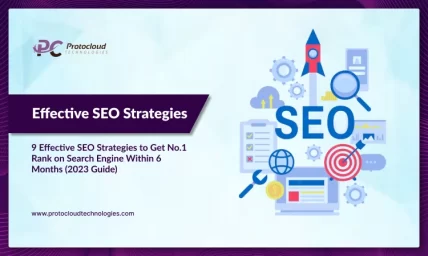
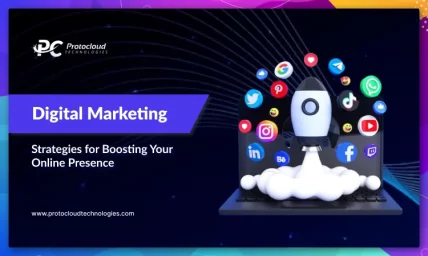

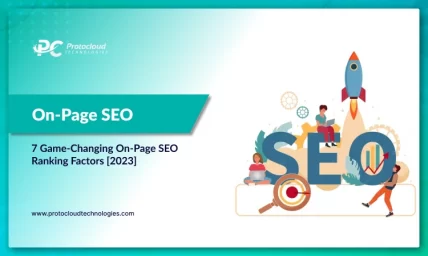
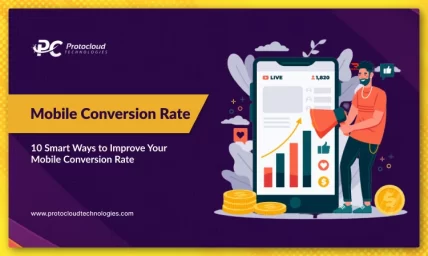


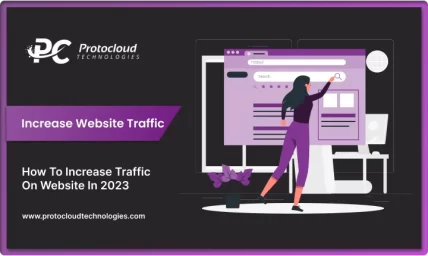
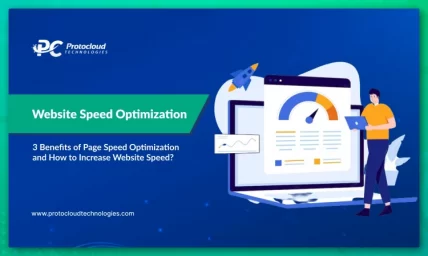
Thanks for crafting the informing & engaging site. I certainly anticipate to contributing knowledge the moment the chance comes up itself! Thanks a bunch again for offering that out there to globe!
can assist spot set of keywords that actually accelerate sales
Ok, can you please share